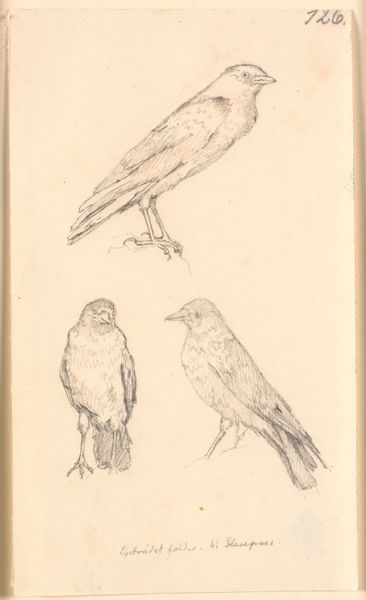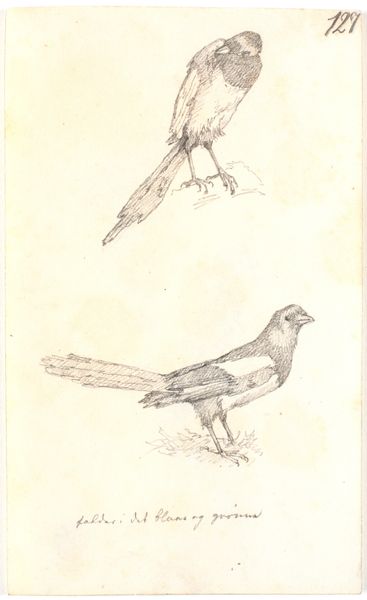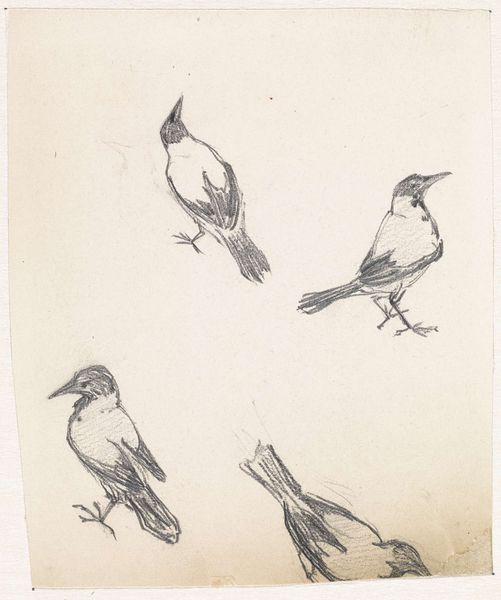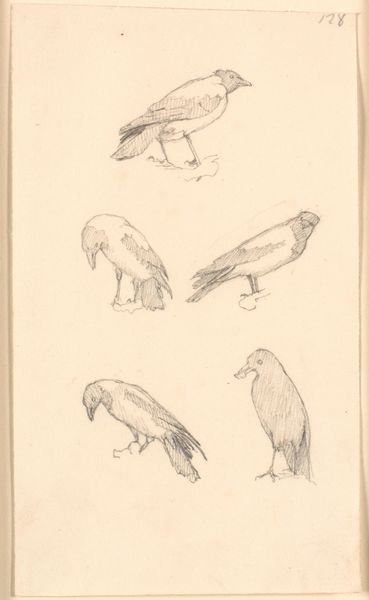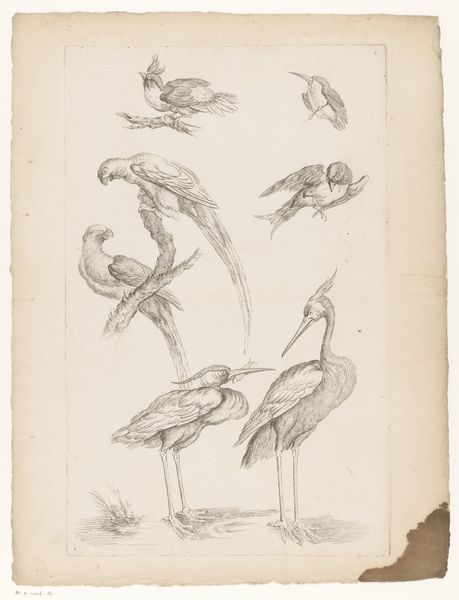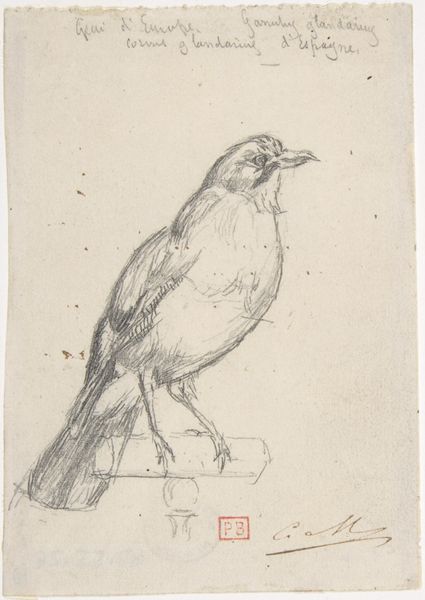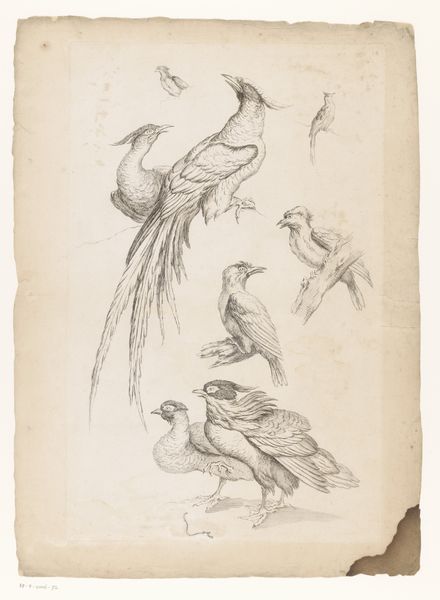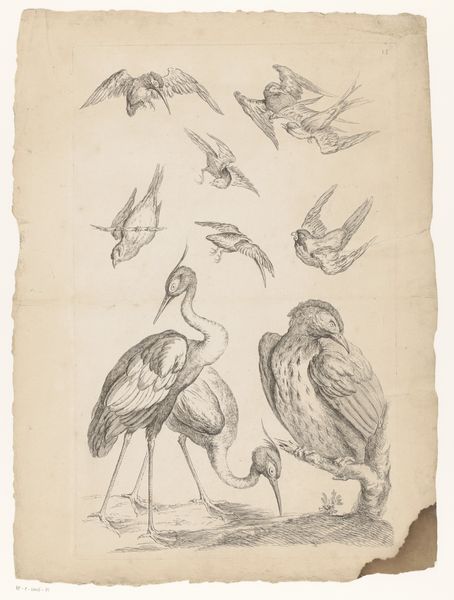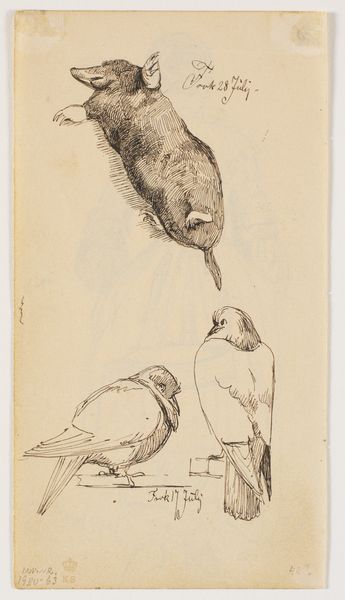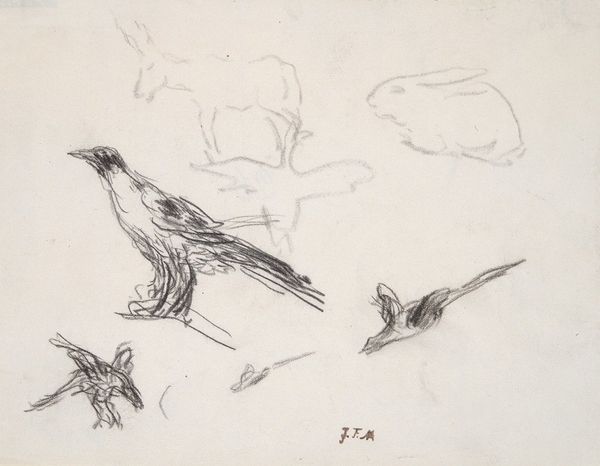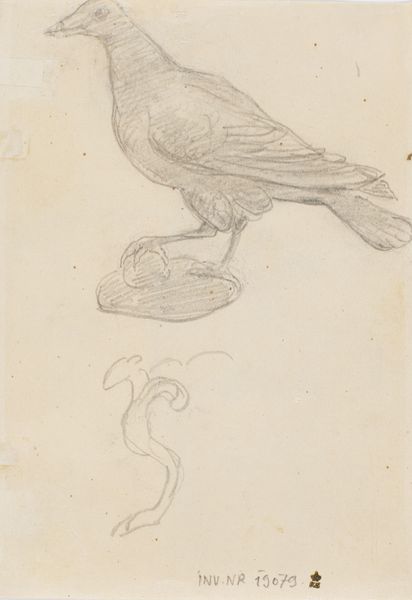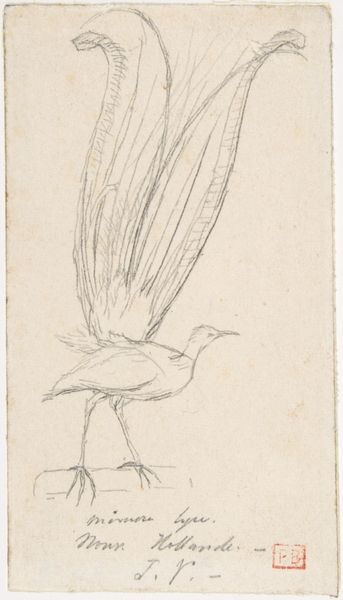
drawing, pencil
#
drawing
#
pencil sketch
#
landscape
#
pencil
#
realism
Dimensions: 177 mm (height) x 102 mm (width) (bladmaal)
Editor: This drawing, "Tre Raager," by Christen Købke, made with pencil, sometime between 1810 and 1848, strikes me with its simple, yet meticulous capturing of these birds. I am intrigued by the variation in the artist’s depiction and their arrangements on the page. How do you interpret this work based on its formal qualities? Curator: Examining "Tre Raager" strictly from a formalist perspective, we immediately note the composition's reliance on line. The artist uses varied line weights and densities to define the forms of the birds and to suggest their texture. How does the arrangement of the three birds, each presented in slightly different orientations and scales, affect your reading of the artwork? Editor: It almost seems like the artist is presenting various studies of avian form in a single snapshot. I notice how the top bird has a more pronounced presence than the others, by sheer size. Curator: Precisely. The stark contrast created by the differing sizes is intentional, guiding the viewer’s gaze across the sheet. Consider how the varying depths of shadow achieved through hatching techniques serve not just to model form but also to differentiate each bird further. How does this contribute to the overall visual dynamic? Editor: I would say that creates a visual hierarchy. It makes it read less as a single work and more of a fragmented sketch page or preparation. Do you think that was the artist’s intent? Curator: In terms of artistic intention, whether Köbke intended a study or a final artwork is less significant than the effects generated by the image's formal attributes. Ultimately, this analysis underscores the drawing’s strength in utilizing the simplicity of pencil to explore depth, texture, and spatial relations. Editor: That makes perfect sense. Thank you for that comprehensive explanation. Curator: You're very welcome. Looking at the formal elements brings us closer to a richer understanding of what the artist intended to create in this image.
Comments
No comments
Be the first to comment and join the conversation on the ultimate creative platform.
